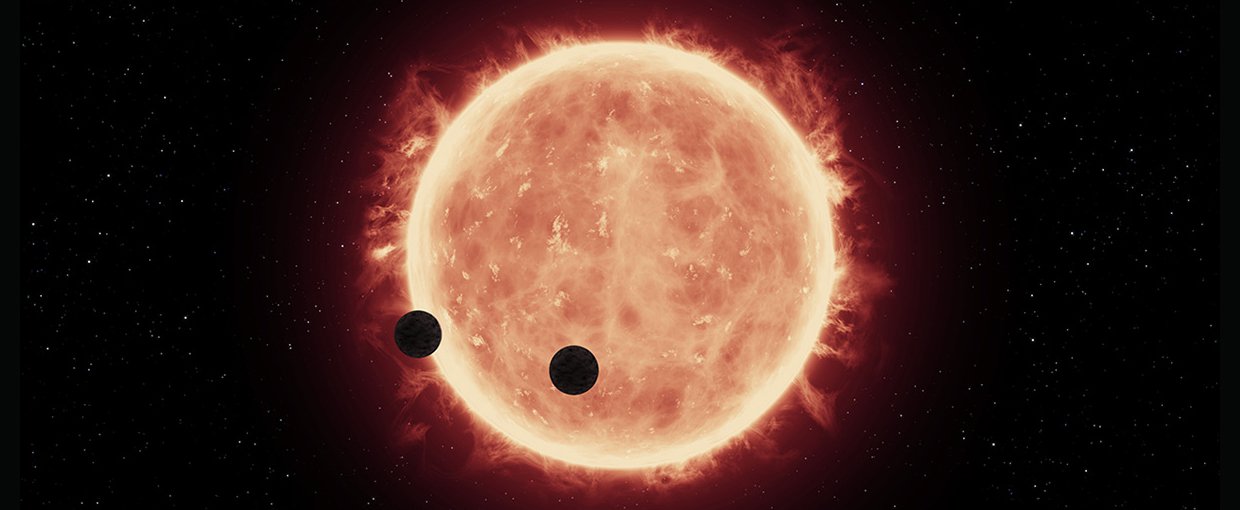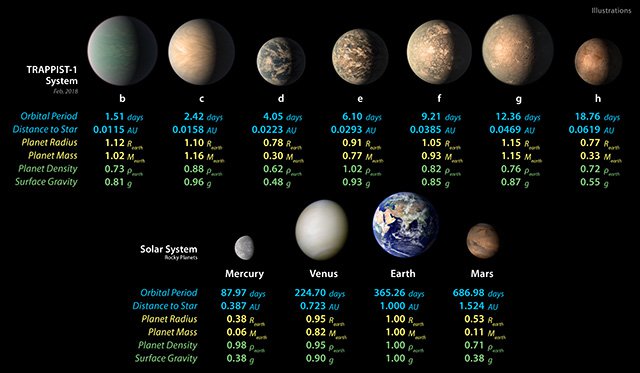
Aug. 14, 2018
Research Highlight
Understanding the Architecture of TRAPPIST-1

Artist’s illustration of two Earth-sized planets, TRAPPIST-1b and TRAPPIST-1c, passing in front of their parent red dwarf star, which is smaller and cooler than our sun. NASA’s Hubble Space Telescope looked for signs of atmospheres around these planets.Image credit: NASA/ESA/STScI/J. de Wit, MIT.
A team of researchers has provided new information about putative planets in the outer regions of the TRAPPIST-1 system. Currently, seven transiting planets have been identified in orbit around the ultra cool red dwarf star. The scientists determined the lower bounds on the orbital distance and inclination (within a range of masses) of planets that could be beyond the seven inner planets.
The research could inform future radial velocity studies, which will be used to determine the architecture of the TRAPPIST-1 system. This system is of particular interest to astrobiologists because it supports Earth-sized planets; and some studies suggest that these planets could be rocky and a few might even be capable of supporting liquid water at their surfaces.

This chart shows, on the top row, artist concepts of the seven planets of TRAPPIST-1 with their orbital periods, distances from their star, radii, masses, densities and surface gravity as compared to those of Earth.Image credit: NASA/JPL-Caltech.
The study, “Dynamical Constraints on Nontransiting Planets Orbiting TRAPPIST-1,” was published in The Astronomical Journal. The work was supported by the Nexus for Exoplanet System Science (NExSS). NExSS is a NASA research coordination network supported in part by the NASA Astrobiology Program. This program element is shared between NASA’s Planetary Science Division (PSD) and the Astrophysics Division.